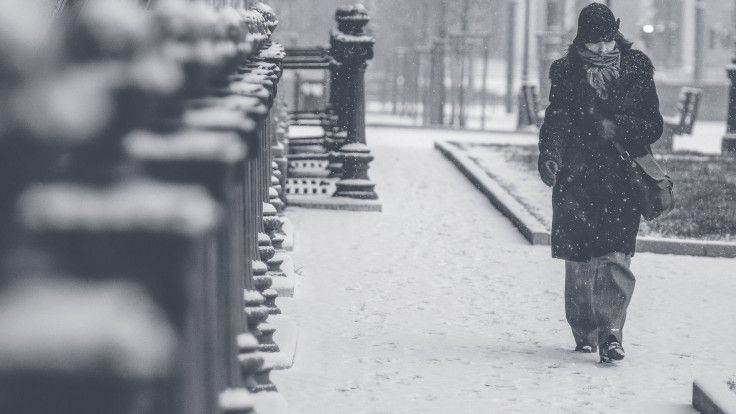Symptoms Of Seasonal Affective Disorder: How To Recognize Signs Of SAD And How To Fight It

Winter can cramp anyone’s style — the frigid temperatures keep us indoors, fewer daylight hours darken our lives, and the sometimes mountainous snow slows our commutes. Although many people get a little bummed out during the gloomy season, however, certain people experience something much deeper than feeling down.
Seasonal affective disorder is a form of depression that follows the cycle of the seasons, with reduced sunlight wreaking havoc on the body and mind. The Mayo Clinic notes it can throw off the body’s internal clock and lower levels of both the mood-affecting hormone serotonin and sleep-regulating hormone melatonin. Many experts believe our internal clock, which helps regulate our sleeping and eating patterns and makes sure our organs’ movements are properly coordinated, is strongly linked to mental health, but it can be influenced by environmental factors like sunlight.
One recent study in the journal Biological Psychiatry suggests that disruptions in our body’s timekeeping system, also known as our circadian rhythm, may be a factor causing anxiety and depression. Although the rhythm and the mental disorders were already linked, it has been unclear which causes the other — but the researchers found that disturbing the internal clock was enough to send otherwise healthy mice into a depression.
Read: Natural Ways to Improve Mental Health — Without Medication
As the heart of winter creeps in, identifying whether you are suffering from simple winter blues or the more serious seasonal affective disorder, also known as SAD, is important. People may typically feel more lethargic or down in winter, says Rush University Medical Center in Chicago — a notoriously cold city — but “the winter blues typically don't hinder your ability to enjoy life.” When work and relationships suffer, you may have the mental health condition that starts in the fall and goes through winter.
“If you're having mood difficulties, other things can start to fall apart too,” Rush psychologist Joyce Corsica said in the statement. “You may find less enjoyment in your life, your work performance may suffer and you may start struggling with your relationships. None of this happens in a vacuum.”
In addition to sadness and low energy, seasonal affective disorder can come with changes in your sleeping pattern, overeating, trouble focusing, isolating yourself from friends and family, feelings of hopelessness and suicidal thoughts.
“SAD can be debilitating for some people,” according to Dr. Christen Tibbs, from Rush. “If you’re suffering from it, it’s important to get help.”
Medication and therapy are two common treatments for the condition, but the medical center adds that exercise can improve mental health, as it does in people with anxiety and other forms of depression, because it increases serotonin and endorphins, which also improve mood and reduce pain. Regulating sleeping and eating times may also help throw the circadian rhythm back in line, as can getting as much sunlight as possible while it’s daylight. When natural light is not an option, light therapies exist to expose people to bulbs that imitate sunlight.
Exposure to sunlight as mental health treatment is no joke — experts say the vitamin D our bodies produce when exposed to sunlight could reduce negative symptoms of schizophrenia and depression. And for many, vitamin D levels drop in the low sunlight levels of winter.
According to Rush, rates of seasonal affective disorder vary based on climate, with people in more northern areas getting the worst of it. “About 9 percent of Americans who live near the Canadian border experience SAD symptoms, compared to just 1.5 percent of people in Florida.”
See also:
Published by Medicaldaily.com



























